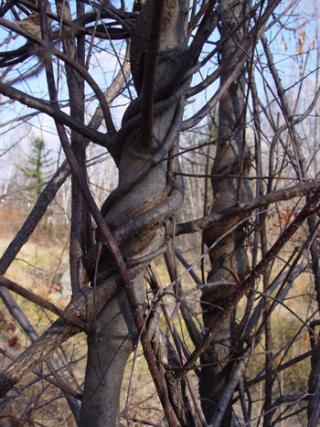Invasive Plant Information

Non-native or “exotic” species of plants that are introduced into new ecosystems, i.e. to regions of the world where they have not lived before, may or may not become invasive. Some scientists estimate that about 25-30% of the non-native species that have been introduced to the United States have now become invasive.
Invasive plants, essentially, are species that grow very rapidly and out of control. Away from the diseases and predators that helped to keep them in check in their home environments, they are able to grow and reproduce so aggressively that they quickly out-compete native species—damaging the ecosystem because their dominance reduces biodiversity, and eliminating many of the plants and animals that used to live there. Often, they spread extensively enough to form “monocultures,” or areas where only one species of plant grows.
Helpful Links for Invasive Species Management:
- A guide to the harmful effects of Glyphosate (a.k.a. Roundup), a common herbicide
- A Guide to Management of Insect and Mite Pests - UMass Amherst
- Massachusetts Introduced Pests Outreach Project
- Strategic Recommendations For Managing Invasive Plants in Massachusetts
- The Evaluation of Non-Native Plant Species For Invasiveness in Massachusetts
- Water Chestnut Management Guidance & Five-Year Management Plan For Sudbury, Assabet, and Concord River Watershed
Just as not all native plants have the same range, a particular exotic or introduced species might be invasive in one part of the United States but not another. Or it may take some time for that species to get established in different regions, so it may already be invasive in one area or state, but not yet have had the same impact elsewhere. Because our study of invasiveness is relatively new, and plants constantly continue to colonize new areas, it is quite likely that the range within which any given introduced plant species is recognized as being “invasive” will grow over time. Further information can be found on the SuAsCo CISMA.

